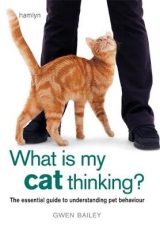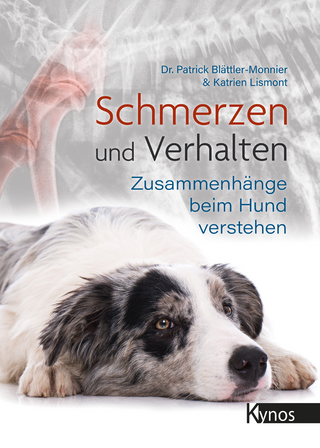
What is my Cat Thinking?
Hamlyn (Verlag)
978-0-600-60422-8 (ISBN)
- Titel erscheint in neuer Auflage
- Artikel merken
Gwen Bailey is the Animal Behaviourist for the Blue Cross, Britain's largest animal welfare charity. Gwen is the author of several books about pets including Rescue Dog and The Perfect Puppy.
Introduction Hunting and feeding Food - soliciting food from humans Hunting - stalk, pounce (use claws), kill (use teeth), consume Fights over territory - despotic cats that bully others Taking excess food home - to nest for kittens (i.e. our house) or for kittens can practice Playing with toys - same behaviour patterns Self-grooming behaviour - fastidiousness Scratching/clawing - need to clean off old sheath of claws to reveal newer sharper ones Sleeping - warmth Bury urine/faeces - helps to keep them secret and safe Social animals Parent/kitten-type relationship with people Social signalling - ears, tails, body positions. etc (what are they saying) Greetings and interactions with people and other cats they know well Head rubs Chin/cheek wipes Tail help straight up 'Chirrup noise' Meow - advertising presence Staying safe Spraying urine - strategic places when anxious or to stake claim to territory Faeces - strong signal for bold cats Scratching - leaving scent from glands between toes Strategic scratching - different height than for sharpening claws Choices if in danger - freeze, run away, fight Bottle-brush cat - hair stands on end when alarmed to try to make themselves look bigger Growling Hissing Spitting Escalation of aggression - staring, vocalising, fighting Body language of fear Breeding Tom cat smell - territory marking with urine Inter-male aggression (including vocalisations) Roaming - finding a mate Mounting and mating behaviour Instinctive care for kittens Communal care for kittens if related females kept together Interactions with humans Eye contact - threat, how cats will avoid people who try to be friendly because they look at them and go to people who don't Places friendly cat will try to rub on you - head and cheek glands and those at the base of the tail 'Safe areas' to be stroked - avoid tummy which can trigger a defensive attack Titbits and training Toys and games - how to mimic prey
| Erscheint lt. Verlag | 15.4.2002 |
|---|---|
| Verlagsort | London |
| Sprache | englisch |
| Maße | 168 x 238 mm |
| Gewicht | 465 g |
| Themenwelt | Sachbuch/Ratgeber ► Natur / Technik ► Tiere / Tierhaltung |
| ISBN-10 | 0-600-60422-5 / 0600604225 |
| ISBN-13 | 978-0-600-60422-8 / 9780600604228 |
| Zustand | Neuware |
| Haben Sie eine Frage zum Produkt? |
aus dem Bereich



